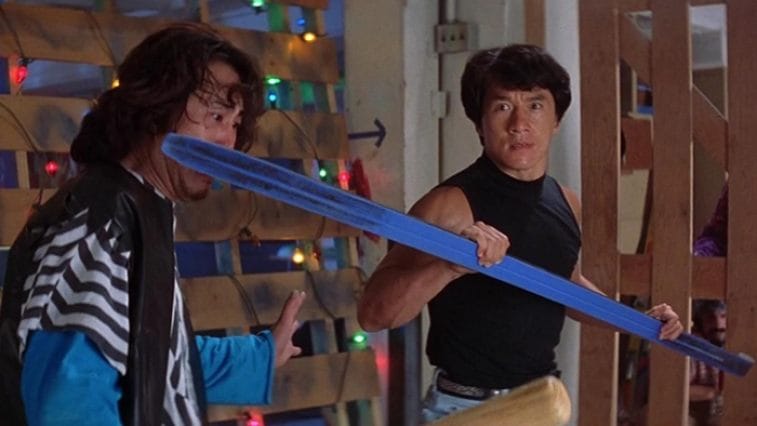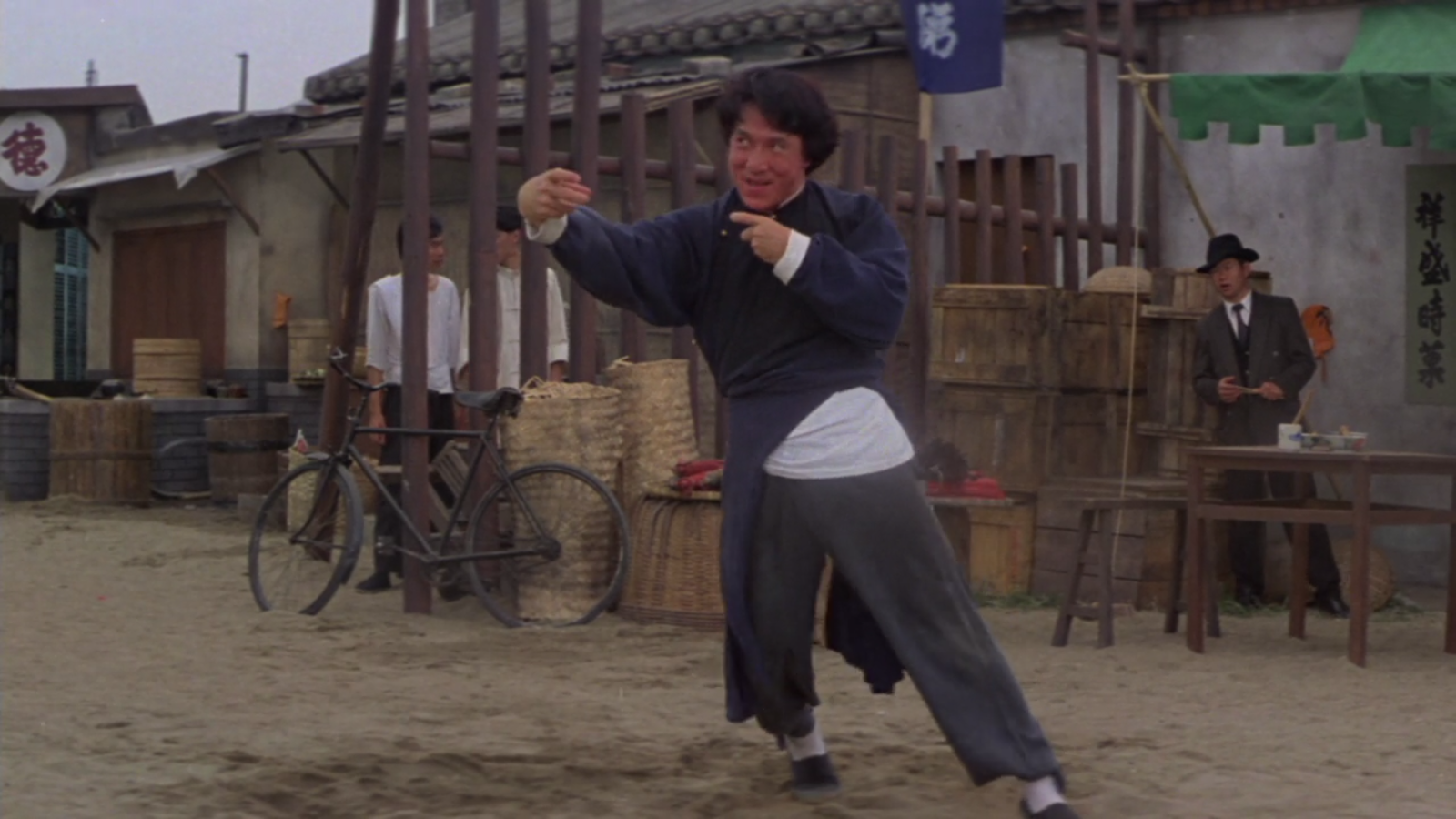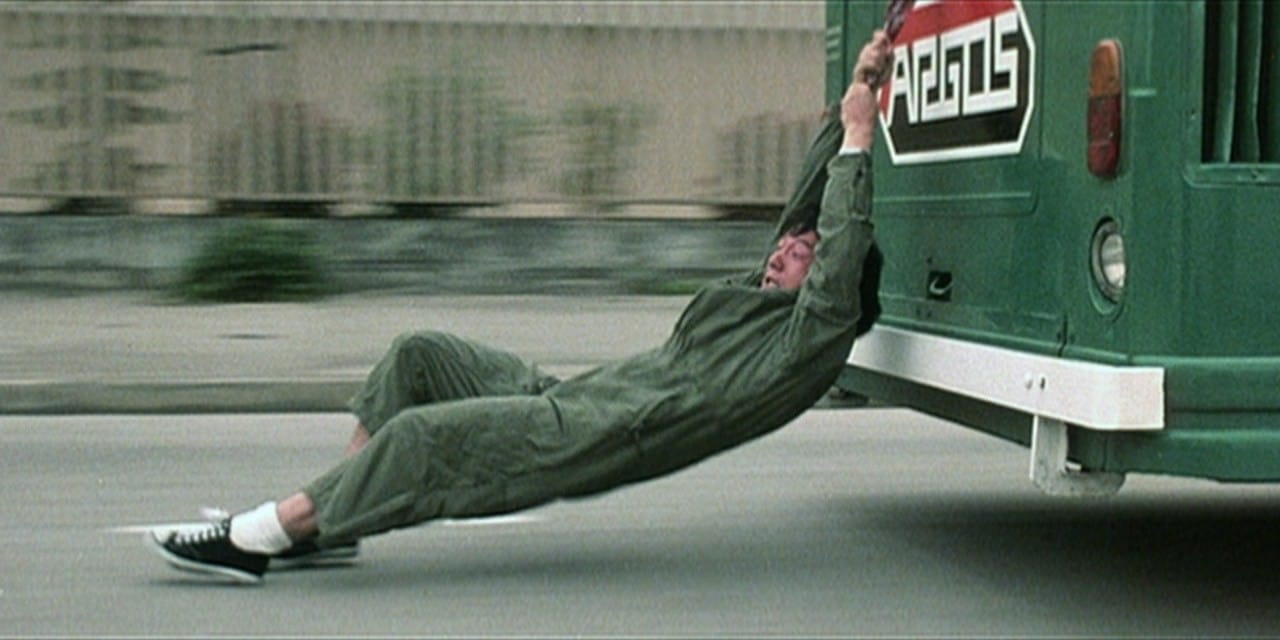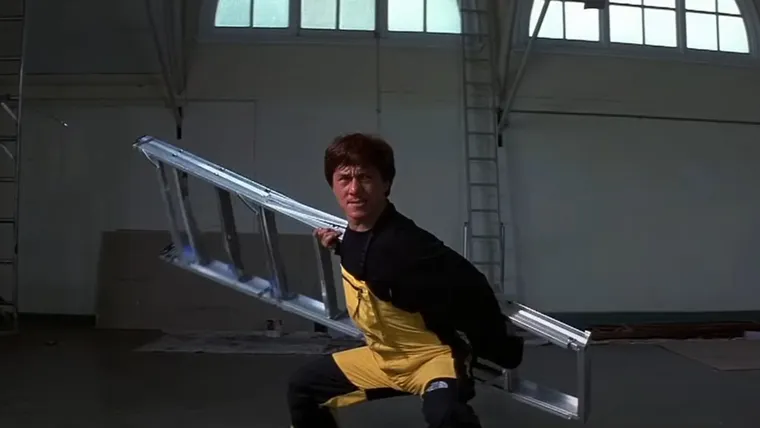The thing you have to remember about growing up in the 80s and 90s is that, unless you had a line on films from outside the United States, martial arts films pretty much sucked. Look, fine, some of them were fun movies, but the martial arts themselves were middling at best. Was Jean-Claude Van Damme physically impressive? Sure. Was the choreography in his film any good? I suppose if slow-motion shots of roundhouses and repeating the same spinning jump kick three times counts as great choreography, you’d say yes. I wouldn’t, though.
I’m being harsh, I know. I like a lot of the movies you’re thinking of, too. Still, the truth of things is that American martial arts choreography was often slow, simple, and executed by mid-level talent. Even when the stars had a background in real tournaments, they were rarely capable of translating fighting skill into exciting performances. And don’t get me started on how often actors with little to no fighting training were cast in roles where choreographers would have to make it look like the highly trained guys playing the villains were no match.
For me, that all changed in February of 1996 with the American release of Jackie Chan’s Rumble in the Bronx. Chan had been around for a while at that point, and Hollywood had even tried to make him a thing a few times without success. Those films were saddled with the problems I mentioned above, though, and, despite his enormous success in Hong Kong, American films never figured out how to use Chan’s talents. Rumble in the Bronx took a different approach to an American Chan breakthrough. Set in America, shot in Vancouver with largely North American actors, and telling the story of someone trying to make it in the West for the first time, Rumble was built from the ground up to show Hollywood who Jackie Chan was on his own terms.
Finally, after over a decade of trying, Chan became an American martial arts star, and would go on to have a 2000s career with a run of action and family Hollywood hits. And finally, after over a decade of trying, I’d found a martial arts star I was head over heels for.

I saw Rumble in the Bronx in the theater in 1996. It was one of those lightning bolt cinema experiences, a portal to a universe I didn’t know could exist, opening in front of me. Chan wasn’t just great, he was working in a different league than anything America had ever released. While I’d eventually come to appreciate the larger world of Hong Kong martial arts, but honestly, Chan played in a different league from most of that world, too. Not because he was the best martial artist in the business. Instead, Chan’s secret weapon was his approach to choreography and performance. Combining breakneck pacing and Looney Tunes comedy, Chan effectively invented a style of action comedy that no one has been able to replicate. Everything about Chan’s work was timing, from the rhythm demanded of his stunt team to enable the speed and complexity of the fights, to the precision in switching from straightforward action to comedic mugging and back again. In a Chan fight, you’d get wild moments of a man holding off four men at once with a stepladder, but you’d also get beats where everyone would pause to catch their breath and Chan would goofily shake off the pain in his hand that you’d get from swinging an actual stepladder around in a fight.
To say I became obsessed would be pretty accurate. The success of Rumble meant the release of more of Chan’s films in the States, including the immaculate Supercop that would introduce us all to Michelle Yeoh. I watched them all. I watched the terribly dubbed 80s action comedies that got smaller VHS releases, suffering through the English-accented guy they consistently cast to voice Chan’s characters. When I went to college in New York City a year later, I hunted down a bootleg of the most widely-praised of his works, Drunken Master II. Chan singlehandedly took me from being a martial arts film dilettante to a full-on enthusiast.
Unfortunately, I was catching Chan at the back third of his career, and very near the end of his time as a full-on action star. By the end of the 90s, Chan’s Hong Kong era had largely ended along with the larger migration out of Hong Kong by many of its best filmmakers that came with the Chinese takeover of the former colony. His 2000s films were often fun, and commonly better choreographed than most of their non-DTV American action rivals (American direct-to-video action of that era is a glorious topic unto itself). They were also made by exactly who Chan was at that point: an aging performer who’d done incredible amounts of damage to himself over the years. I love Shanghai Noon for what it is, and I’m happy he had the chance to make them, but they also aren’t the same. The only way forward as an American Jackie Chan fan was back, and at the time, the availability of Chan’s older films in formats that didn’t largely gut them was limited. The American release of Drunken Master II, for instance, is a travesty. Legend of Drunken Master cuts out chunks of the film, changes its iconic score, and overdubs Anita Mui’s legendary comedic performance.

This spring, I decided it was finally time to close some of the gaps in Chan’s filmography for myself. While finding unaltered and undubbed copies of everything can still be difficult (or only possible via less, uh, official means), things were still much easier to find than they were when I was becoming a fan. I made a list of twenty films (that became twenty-one just before I wrapped up) and committed to watching them all. The marathon spanned most of his Hong Kong career, starting from 1976’s Shaolin Wooden Men and ending with 1999’s Gorgeous. I went through chronologically, and tried to pick a mix of pivotal, beloved, and outlier films to build things out.
For the first time, I was able to appreciate Chan’s full evolution from a chosen successor to Bruce Lee’s stardom to idiosyncratic Buster Keaton-with-fists. Shaolin Wooden Men is about as traditional a 70s kung fu film as you’ll find in Chan’s filmography. While there are sparks of the style that would make him a star, it’s mostly a Shaw Brothers knock-off that can’t find its own identity. It wouldn’t be until 1978’s Snake in the Eagle’s Shadow that the Chan we now love can be seen emerging. What I hadn’t realized was that this evolution occurred hand in hand with the rise of one of Hong Kong’s greatest choreographers: Yuen Woo-Ping. If that name doesn’t sound familiar to you, I can help: The Matrix.
Between Snake and the same year’s Drunken Master, Chan and Woo-Ping would define a faster-paced, more dancerly style of combat that would become signatures in ways distinct to each man’s future careers. It’s obvious, watching those two films back to back, how influential on each other the two were, even though they wouldn’t work together again. You could argue that they made each other stars, or, at least, I would.
It’s 1980’s The Young Master, Chan’s second directorial effort, that brings the whole picture together. While not one of his best films, The Young Master feels like the first true Jackie Chan Film in its overall balance of choreography, comedy, and tone. It’s a star taking all of the things he’s learned so far and figuring out how they make him who he is. If you wanted to see Chan emerge from his chrysalis, this would be where to go.
Through the 80s, Chan has a run of films where every other entry is something that almost certainly tops someone’s list of the best of his career. Project A, Wheels on Meals, and Police Story, in particular, are all full-on classics that add and escalate the final element of the Jackie Chan Style: stunts that should have killed him. One of the films in that era, in fact, very nearly did kill him: Armour of God’s seemingly minor jump from a castle wall to a tree turned into a disaster as a branch snapped and Chan landed head-first on a rock. It’s one of those stories he tells in interviews and asks the interviewers to touch the hole in his head to prove how bad it was. While Police Story is the most widely-known of the era (and has some of his most beloved stunts), it’s Wheels on Meals that most surprised me. Co-starring his other long-time collaborators Sammo Hung and Yuen Biao, Meals is both ludicrously fun and has one of Chan’s best final fights against (I could not believe this when I ran into it) Benny Urquidez, better known in the states as the Ghoul in Grosse Pointe Blank. The team would also rejoin for a lesser, but still extremely fun final go together (including Urquidez in another all-timer fight) in Dragons Forever.

When I’d first seen that crappy bootleg copy of Drunken Master II, I hadn’t realized it was his first traditional kung fu film since 1983. It’s a genre he obviously felt less comfortable and interested in right from the start of his career, and I have to imagine that the long shadow of Bruce Lee made getting as far away as possible from it a canny career move. Chan’s troubled working relationship with co-director and co-star Lau Kar-leung, a legend of 70s kung fu cinema, only further underlines how far Chan had moved beyond his roots. Yet, it’s hard to argue against the common assertion that this is Chan’s best overall film. It may not be my absolute favorite — nostalgia is a thing I can’t pretend I’m immune to, and I also find myself more drawn to Chan’s modern-day films than to traditional kung fu — but damn if the film isn’t as perfect as everyone says. It’s one of those “If you only see one movie by this star” kinds of pictures, and deserves its place there.
It also serves as an inflection point that leads into Chan’s final phase as a Hong Kong star. Rumble in the Bronx immediately followed it, bringing us into the International Expansion era of Chan’s work. From Bronx on through Who Am I? (a personal favorite), Chan’s films all take place partly or entirely outside of Hong Kong. Bronx is his dive into America, First Strike is a clear James Bond riff, Mr. Nice Guy is set in Australia just, uh, because, I guess, and Who Am I? opens with an international military task force, of which Chan is one member. It’s obvious that, with the future of Hong Kong cinema uncertain, and money to be made internationally, Chan had a winning strategy to finally break out into the world. It would pay off, too. It’s hard to argue that this run is Chan’s best, but they are some of his most accessible films. If you wanted to dip your feet into his career, you could do worse than Rumble in the Bronx, a film custom-designed to teach you how to watch one of his movies.
My marathon capped off with a late entry: 1999’s Gorgeous. Chan’s first film after leaving his longtime studio, Golden Harvest, Gorgeous is a bit of an odd duck, but a delightful one. It’s really a romantic comedy with some action tossed in, and even what action exists is more about Chan’s character’s self-actualization than real physical danger. It’s a fascinating capstone to Chan’s Hong Kong era, as it’s more in line with the comedy-first films he’d make in Hollywood from here than the movies that preceded it.

Martial arts cinema has changed a lot since I first fell in love with Jackie Chan’s films, and in large part because of him. The Hong Kong ethos that he exemplified has become more expected in American action blockbusters. 1999’s The Matrix has a lot to do with this in pushing its stars to learn real choreography and be more present in the stunts, and let’s remember how that choreographer’s career began. The expectation of Chan-like speed and complexity in fights has taken root across the world, showing up in the DNA of things like Thailand’s Ong Bak and Indonesia’s The Raid. The days of a slow-motion spin kick being the highlight of a fight are thankfully long gone. Even normal American blockbusters show Chan’s influence. Just look at Tom Cruise hanging off of planes and buildings in the Mission Impossible films.
Chan’s work remains special despite the wide influence he’s had. No one has even really tried to capture the particular mix of comedy, fights, and stunts that made him a star. It’s easy from the outside, thinking about what you’ve heard about Chan’s work, to think they’re fight films with a bit of Ha Ha time thrown in. No, friends, a Chan movie is often at least half goofy hijinks. Almost from the start, you can find more comedy films with great action in his filmography than the other way around. Chan’s late-career turn into Liam Neeson-esque dour thrillers is even more surprising and disappointing to me after this marathon than going into it. Jackie Chan is one of the rare natural physical comedians we’ve had, a master at timing, at mugging, at knowing when and how to beat the living hell out of himself for laughs.
If you haven’t seen much or any of Jackie Chain’s work, I urge you to take this opportunity to give it a try. There’s no wrong way to get started. It only depends on your interests. Rumble in the Bronx is the easiest place to start (obviously, it was mine), but Drunken Master II is such a clear classic that you couldn’t go wrong there, either. Police Story’s stunts are another great place to start, if a more standard action film is your bag. Or, hell, get weird and pick whatever off of my list that sounds like a good time. There’s almost certainly something for you to love in his work, and whatever you find, there’s a good chance he’s the best to have ever done it.



